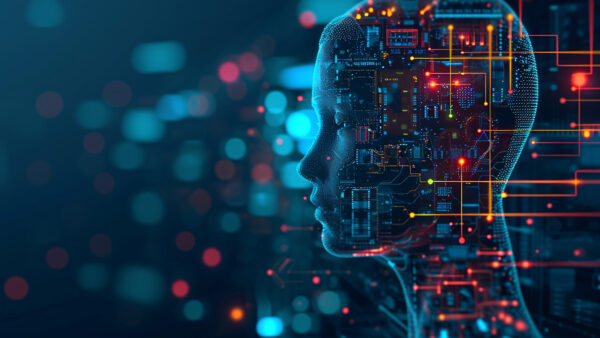
What if you could cut your localization turnaround time and reduce costs while increasing your market reach? All global enterprises would find massive benefits in that – and it’s possible with AI localization and workflow automation. Together, they can transform the localization process when deployed strategically. AI can capably translate (its best-known use case), but it can also streamline workflows, simplify processes, improve quality, and enable localization at scale.
Yet, as with any new(er) technology, AI in localization is a double-edged sword. On one hand, it offers unprecedented speed and efficiency, opening doors to new markets at a pace we could only dream of. On the other, it struggles with accuracy, cultural sensitivity, and the subtleties of language and emotion that only humans can fully understand. Let’s look at the advantages and disadvantages of leveraging AI in localization and how to maximize its benefits.
5 key benefits of AI in localization workflows
AI is revolutionizing localization by making processes faster, more accurate, and cost-effective. Here’s a snapshot of the key benefits:
Translation efficiency: AI translation engines speed up translation while maintaining high accuracy. For instance, our work with a major Canadian wholesaler shows how adaptive machine translation can swiftly handle large volumes of product content to meet tight deadlines without compromising quality.
Content evaluation: As mentioned above, not all content is a good candidate for MT. AI can help determine whether content is suitable for some level of MT or whether a human translator is required.
Continuous localization: AI smoothly integrates into development pipelines for real-time updates across languages, so localized content keeps pace with its source. We used this capability to enhance the online shopping experience for a global eCommerce marketplace, enabling continuous localization that drove higher engagement and conversions.
Quality assurance: AI QA tools promote linguistic consistency and style across all content. AI tools help maintain a coherent brand voice across multiple languages by identifying and correcting potential issues.
Cost-effectiveness: AI reduces localization costs over time, especially for large-scale projects. Automating repetitive translation tasks allows for significant savings, with the technology’s initial investment paying off over time.
Tailoring any AI integration to fit a business’s specific needs is critical. The goal should be to combine AI’s power with human expertise so that every project achieves the cost and efficiency benefits while staying true to the original message.
4 big challenges of AI in localization workflows
AI and automation can solve a number of problems with localization workflows. Still, they also have the potential to create new ones, especially in the area of translation.
The following issues present particular challenges:
Inaccuracy in low-resource languages: Lesser-known languages don’t have as much data to train MT engines. This results in lower translation quality and a higher potential for errors.
Language exceptions and specialized fields: AI can stumble over language complexities and is less adept in specialized areas like legal or medical translation. These fields require a level of precision and understanding that AI, as of now, can’t always match.
Translation bias: AI is also likely to perpetuate biases in its training data. This can skew translations in subtle ways that reflect linguistic but cultural biases and will require human intervention to correct.
Ongoing development: AI and machine translation technologies are continuously improving, but they’re not always where we want them to be. At Acclaro, we’re committed to staying on the cutting edge, researching, and vetting the latest developments to ensure our AI tools meet the high standards our clients expect.
Navigating these challenges is part of our commitment to delivering top-notch AI localization solutions that harness AI’s potential while mitigating its limitations.
Top 3 areas where AI can improve the localization workflow
Now that you understand the benefits and challenges of implementing AI in the localization workflow, we can dig deeper into where and how precisely these tools can be implemented. The three key areas are translation, quality, and production-level tasks.
Deploying AI and MT in translation
Some types of content, like marketing assets and other creative or culturally sensitive texts, require human expertise. However, in other cases, using AI for translation makes sense.
Language service providers often deploy neural machine translation (NMT) and/or large language models (LLMs) to boost translation productivity.
Here are a few examples of translation challenges this technology can solve:
- High-volume and informative content: For translating large volumes of content like FAQs, customer support information, and product descriptions, AI is efficient and effective. These content types prioritize clear communication over creativity and emotional impact, making them ideal candidates for MT.
- Continuous updates: Websites and apps with frequent updates benefit from AI’s ability to keep all language versions current.
- Initial drafts: AI can quickly produce “first drafts” of translations for large projects, reducing the amount of human labor needed.
MT is typically recommended for well-structured, informational content that benefits from quick translation. By strategically applying AI to suitable content types, we play to the technology’s strengths while letting human experts do what they do best. For translation, we evaluate the most effective approach to using AI for efficient, high-quality translations and assess the most suitable MT engines and other tools for the job.
AI innovations in quality assurance
Quality assurance is another aspect of localization that AI can streamline. AI enhances QA through:
- Error detection: Identifying and correcting common errors like typos and grammar mistakes.
- Consistency checks: Maintaining a uniform tone and style across large projects and multiple languages.
- Automated testing: Spotting potential UX issues in software and web content to ensure a smooth user experience.
- Quality estimation (QE): Predicting the reliability of AI translations, indicating when human review is necessary for complex or culturally sensitive content.
With these innovations, AI is changing the game in quality assurance to make the localization process smarter and faster so your content always meets your quality standards.
Other manual localization tasks where AI drives improvements
Doing everything by hand in localization can be time-consuming and error-prone. Here are some of the problems automating with AI can solve:
- Managing region-specific content variations: Imagine trying to juggle all the date formats, currencies, and cultural nuances by hand for each region. It’s complicated, time-consuming, and ripe for errors.
- Dynamic content updates: Websites and apps are always on the move, constantly updating. Trying to keep translations fresh across all versions manually? That’s a fast track to a bottleneck.
- Fixing human errors: We’re only human — mistakes happen, especially with repetitive tasks across multiple languages. Automation can be built to check for, catch, and fix common errors.
- Software localization: Updating test cases and scripts in several languages is complex. Without automation, it’s a recipe for delays and mix-ups. AI helps us streamline the process for smooth, agile rollouts.
Gain the AI advantage in your localization program
Workflows that are managed entirely manually introduce unnecessary delays and increase the potential for errors. At Acclaro, we believe in applying technology, where feasible, to improve processes, reduce costs, eliminate errors, and free up your top resources to do more value–added activities.
In the case of translation, instead of a choice between humans or machines, we offer an intelligent mix of both—using AI translation tech to streamline processes and enhance quality while keeping human expertise at the core of critical content.
Looking to boost your localization efforts with AI? We’ve got the tools and the team to make it happen. Discover how Acclaro can streamline your global communication with AI.
Insights for global growth

Power your strategic growth
Go beyond tactical localization with tailored, strategic solutions that resonate locally and drive growth globally.
Get started



